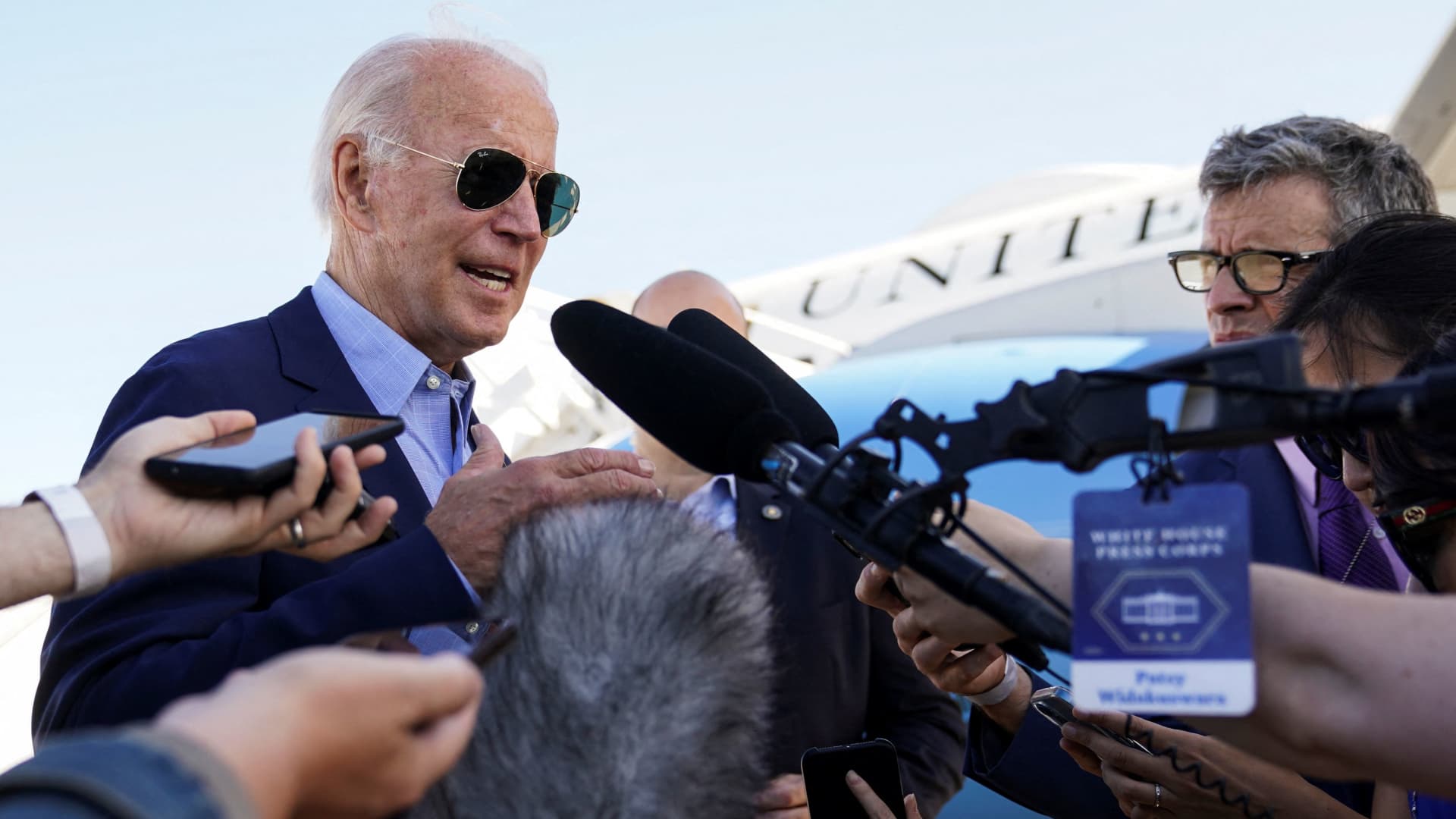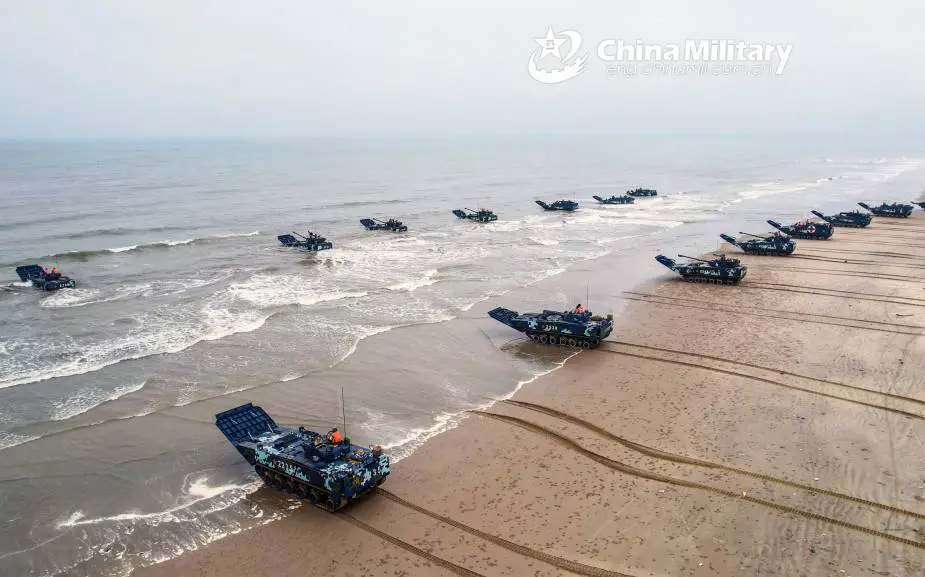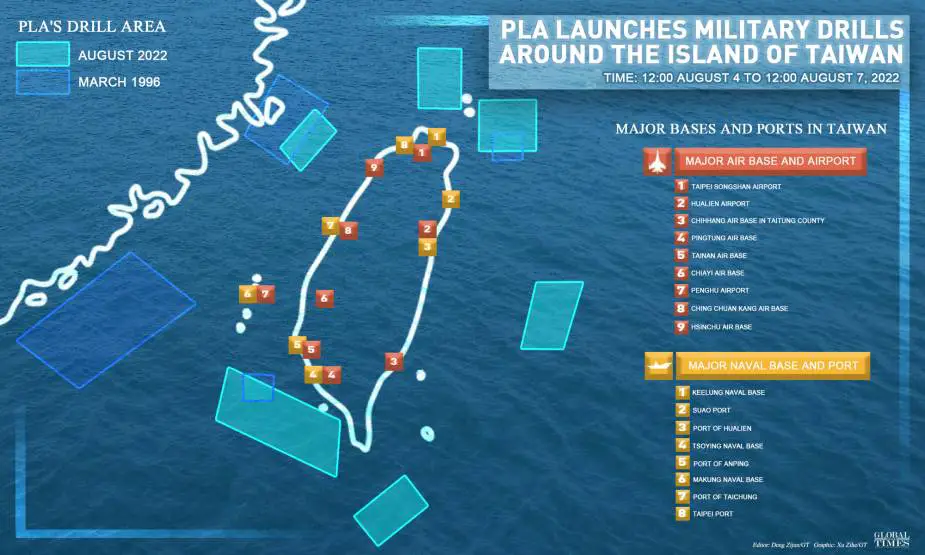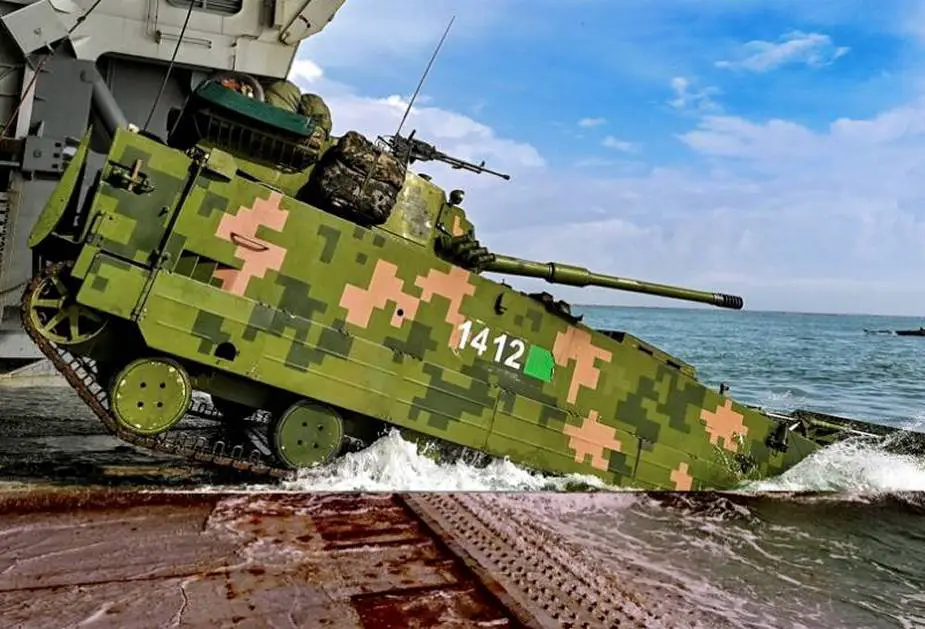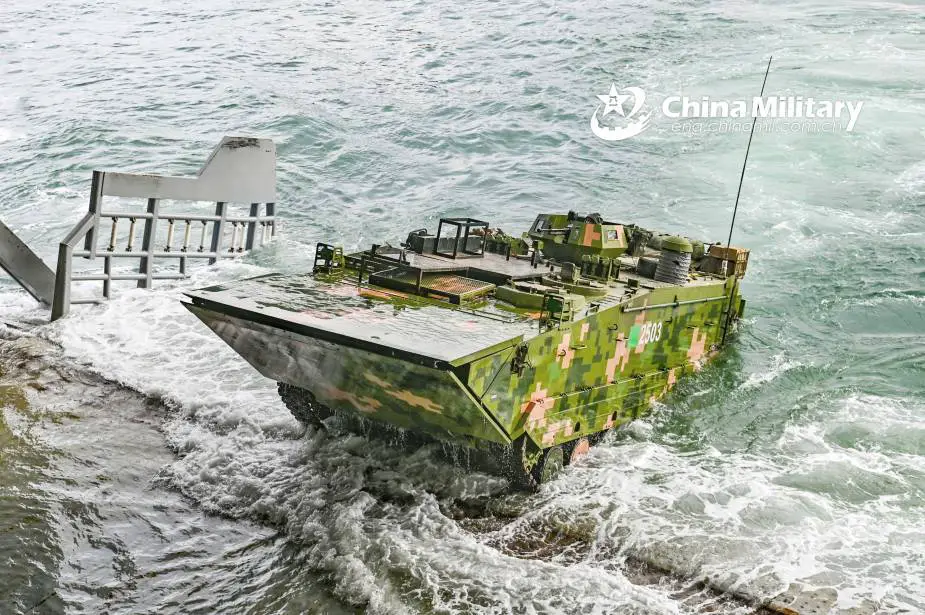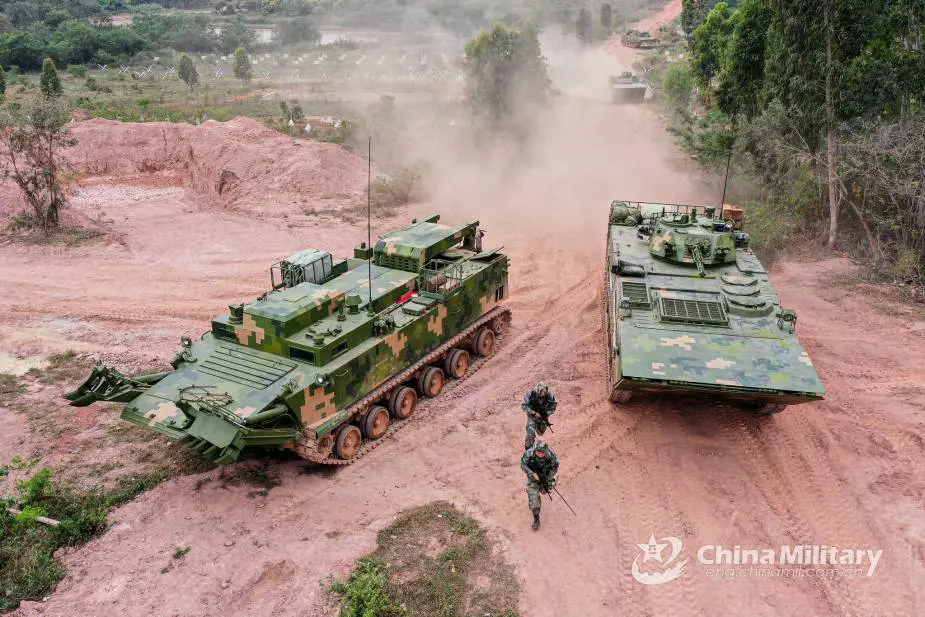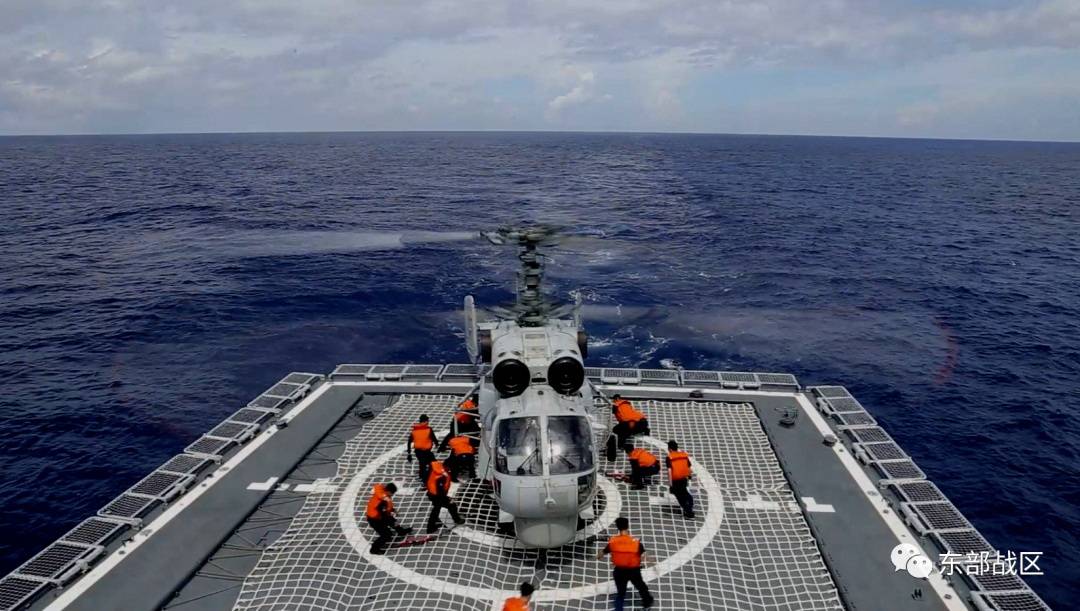Upping the ante: Key takeaways from China’s major drills around Taiwan
by Gabriel Dominguez
Aug 9, 2022
China’s largest-ever military exercises around Taiwan have not only raised regional tensions — they have also provided analysts with potential insight into how Chinese forces might operate around the self-ruled island in case of a conflict.
At the same time, the
multiday maneuvers, launched in retaliation for U.S. House Speaker Nancy Pelosi’s visit to Taipei last week, have resulted in Sino-U.S. ties — widely seen as the defining bilateral relationship of the first half of the 21st century — dropping to a new low.
Here are some of the key political and military takeaways from Pelosi’s controversial trip and Beijing’s ensuing military escalation, both of which have led to what some are referring to as the “Fourth Taiwan Strait Crisis.”
‘Talking past each other’
One of the most important political developments seen in recent days has been the breakdown in communications between Washington and Beijing.
“The US and China are seriously talking past each other. This is not just about Pelosi. The U.S. thinks this is about Chinese coercion. The Chinese think this is about a drift from ‘one China’ to ‘one China, one Taiwan.’ That disconnect will lead to a very unstable new baseline,” tweeted Evan Feigenbaum, vice president for studies at the Carnegie Endowment for International Peace.
Just how fraught Sino-U.S. relations have become can be seen in the series of diplomatic “countermeasures” announced by Beijing targeting several areas of bilateral cooperation prioritized by Washington.
These include Beijing’s cancellation or suspension of talks and cooperation agreements in eight different fields, including climate change, legal assistance in criminal matters, and defense consultations, the last of which are critical, considering the increased risk of a military miscalculation.
A Taiwanese warplane lands at a base in Hualien, Taiwan, on Sunday. | LAM YIK FEI / THE NEW YORK TIMES
Both Washington and Beijing see the latest developments not as a single event but as part of broader trends in the perceived policies of the other, with each side stressing the importance of maintaining the status quo in relation to Taiwan while accusing each other of aiming to change the status quo.
Recent research conducted by the U.S. Institute of Peace (USIP) suggests China perceives that the administration of U.S. President Joe Biden has undertaken a significant shift in its Taiwan policy, resulting in a concerted effort to qualitatively upgrade U.S. relations with the democratic island.
“This perception is the polar opposite of the message that the Biden administration intended to signal to Beijing, namely that U.S. policy on Taiwan has remained unchanged and is completely consistent with the approach of prior administrations,” said Andrew Scobell, a distinguished fellow with USIP’s China program.
The main issue, he said, is that clear signaling and unambiguous messaging have become exceedingly difficult in the current toxic climate of Sino-U.S. relations, which is “rife with mutual suspicion and deep distrust.”
‘Likely only the beginning’
Beijing’s reaction to the Pelosi trip has underscored the political and economic costs China is prepared to impose on Taipei.
According to the China Power Team at the Washington-based Center for Strategic and International Studies (CSIS), part of this involves making clear that Taiwan will “bear the brunt of Chinese punishment for closer relations with the United States. Beijing hopes that this will drive a wedge between Taipei and Washington.”
Moreover, the military maneuvers can be interpreted as a message to both the U.S. and its regional allies that Beijing is both capable and determined to exert control over Taiwan and enforce its view of the “One China” principle, which states that it has sovereignty over the island.
For instance, the exercises also involved direct costs for Japan, and to some extent the Philippines, because of operations by the People’s Liberation Army (PLA) within waters claimed by these countries, including the launch of
five ballistic missiles into Japan’s exclusive economic zone (EEZ).
Tourists visit a scenic area on Pingtan Island, one of mainland China’s closest points to Taiwan, in Fujian province on Saturday. One of China’s exercises was positioned off the island at the narrowest part of the Taiwan Strait. | AFP-JIJI
At the same time, Beijing has shown it is willing to further escalate tensions to deter other countries from getting involved, CSIS experts noted in a recently released report. They also wrote that the PLA exercises led to a rerouting of commercial air and maritime traffic around Taiwan, which Beijing uses to demonstrate “China’s ability to ‘control’ activities near and around Taiwan.”
There are also concerns that the recent exercises, including their intensity and scale, might become the new norm in China’s dealings with Taiwan.
“Beijing aims to use the exercises to establish a new status quo in the Taiwan Strait. China is specifically seeking to erase the notion of the median line that divides the strait and aims to constrain PLA operations west of the line,” wrote the CSIS experts.
“China also seeks to establish a new normal in which the PLA no longer respects Taiwan’s claims to a separate airspace and territorial waters,” the authors said, adding that these exercises are “likely only the beginning of PLA operations close to and above Taiwan.”
This view is shared by retired Australian Maj. Gen. Mick Ryan, who noted that this puts Taiwan, the U.S. and other nations in a quandary.
“To push back on this ‘new normal’ established by the PLA will probably require a higher operational tempo from Taiwanese, Japanese and American forces,” he said. “This is a very dangerous situation because it increases the chances of miscalculations. And historically, many wars have started not because of the calculations of the belligerents but because of miscalculations.”
Fears of a Ukraine scenario
A key element of repeating such drills is that they would allow the PLA to rehearse a variety of military operations that could form part of a blockade or invasion of the island. This, the CSIS experts noted, includes not only activities directed at Taiwan, but operations to prevent a potential third country intervention in a China-Taiwan conflict.
At the same time, the maneuvers highlighted the increased confidence the PLA has developed in its capabilities to conduct simultaneous operations around Taiwan and its readiness to quickly encircle the island from multiple directions. This is important, as it is still unclear whether the U.S. and its allies would be able to resupply Taiwan in the event of a conflict, which would be much more difficult than NATO’s current ability to do so for Ukraine.
Although islands typically offer the defender an advantage by forcing the attacker to undertake an amphibious landing, they can have downsides as well. Unlike Ukraine, which can be directly provided with weapons and other supplies from neighboring European countries, Taiwan lacks a land border with a friendly country, making a similar arrangement for military support more difficult.
Moreover, at a bit over 36,000 square kilometers, Taiwan is a fraction of the size of Ukraine’s over 600,000 square kilometers, rendering strategies such as trading space for time less viable.
Taiwan is also further removed from many of its allies, meaning that support — including aid for potential refugees — would require more time to arrive and would probably have to go through heavily contested airspace and sea lanes.
Against this backdrop, Ryan noted that if Chinese aggression continues to increase, Taipei may fear a Ukraine scenario where friendly nations would provide moral and possibly material support but no “boots on the ground and at sea,” and where Western publics would lose patience assisting Taiwan in any future blockade or invasion scenario. Things would worsen for Taiwan if the Chinese succeeded in rapidly asserting its superiority in any takeover, he said.
At the same time, imposing a blockade or invading the island would not be easy for China. Although Taiwan has a smaller military, the Chinese would still need to deploy their forces hundreds of kilometers from home ports and airfields, and then sustain these operations over time, Ryan said, even before any landing operation is undertaken.
“It is not clear whether the PLA has the capacity to ensure it can transport the hundreds of thousands of troops needed for any invasion scenario,” he said. “The Taiwan Strait is up to 200 km wide. This is a very significant obstacle for the Chinese, and they would probably take very high casualties in any transit of the strait.”
A glimpse into PLA plans?
Six exercise zones were chosen for the Chinese drills, and analysts say these locations could serve as indications for future PLA operations around the island and possibly even Beijing’s blockade and invasion plans.
Three of these zones intruded into Taiwan’s territorial waters and were alarmingly close to Taiwan’s capital and key cities, while the others were far from the Chinese mainland and beyond the Taiwan Strait, venturing into EEZs also claimed by Japan and the Philippines.
The CSIS experts noted in their report that one of the areas (Zone 1) was positioned off the coast of mainland China’s Pingtan Island at the narrowest part of the Taiwan Strait.
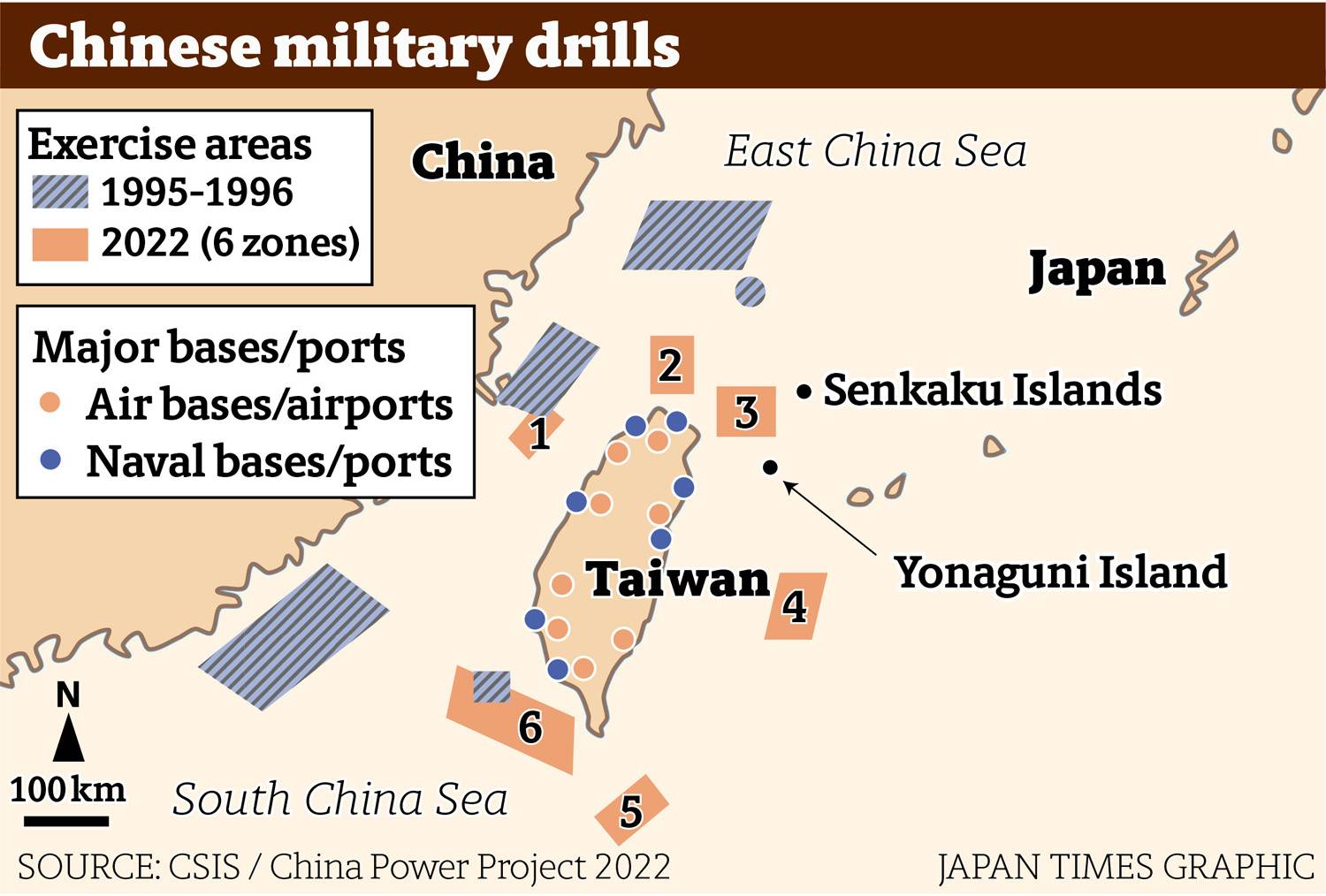
“PLA analysts have noted that operations by this narrow neck could enable China to close off the northern entrance to the Taiwan Strait. This zone was also chosen to intentionally breach and undermine the legitimacy of the ‘median line’ running through the Taiwan Strait, where PLA forces typically operate to the west of the line,” they wrote.
Zones 2 and 3 located to the north and northeast were not only near important ports and coastal areas that military planners believe are suitable for a potential PLA amphibious landing, but also a short distance away from the Japanese-administered Senkaku Islands, which China also claims and calls the Diaoyu. From there, the experts said, the PLA would be in a good position to conduct operations against both Taiwan and Japan.
“Control of both zones could make it difficult for the United States or Japan to deploy forces into Taipei from the northeast side and could enable the PLA to blockade Keelung Harbor,” they wrote.
“Moreover, operating from Zones 1, 2, and 3 could allow the PLA to move quickly to seize Taipei from three different directions and may be particularly important if the PLA seeks to engage in a decapitation attack against Taiwan’s leadership,” the authors wrote.
Zone 4, meanwhile, faced two important air force bases and overlapped with Japan’s EEZ around
Yonaguni Island. Zone 5, located southeast of the southern tip of Taiwan, intruded into the Philippines’ EEZ and would be a critical choke point separating waters within the so-called First Island Chain — which extends from the Kuril Islands to Borneo — from the Philippines Sea and the broader Pacific Ocean, CSIS noted.
Zone 6 was near the cities of Kaohsiung and Zuoying, which are home to important commercial ports and key military bases, as well as beaches and coastal areas suitable for an amphibious invasion.
PLA progress
The exercises, which were monitored by U.S. aircraft and warships operating nearby, also gave an insight into the type of equipment China would use in a Taiwan contingency, including large numbers of aircraft, warships, submarines, as well as ship- and ground-launched missiles.
Moreover, the PLA focused on testing troops’ land attack and sea assault capabilities with joint air and naval operations in the sea and airspace to the north, east and southwest of Taiwan. As CSIS noted, these missions rehearsed clearing paths for amphibious landing forces to launch beach assaults against Taiwan.
Finally, the exercises showed just how much the PLA has advanced not only technologically but also in terms of combat readiness and doctrine, compared with the Third Taiwan Strait Crisis from 1995 to 1996.
Meia Nouwens, a China defense policy and military modernization expert at the International Institute for Strategic Studies, noted that the PLA has changed considerably in recent years, particularly since it started implementing reforms in 2015.
“The PLA has procured more advanced air, naval and missile capabilities supported by a more efficient and competitive Chinese defense industrial base,” she said.
“Doctrine is focused on fighting in the air, maritime, electromagnetic and space domains. And the PLA has been directed to fight integrated joint operations — across all services and theater commands.”
Ryan has a similar view, arguing that these advanced capabilities have changed the calculus for both Taiwan and other defense planners that might come to the aid of the island.
On the other hand, the integration of more sophisticated Western sensor networks since 1996 means that Western military organizations can better detect Chinese movements pointing toward increased Chinese aggression, including a blockade or invasion.
Given the heightened tensions around Taiwan, Ryan argues that the U.S. and others may seek to establish clearer procedures for encounters in the air or at sea.
“There have been some dangerous events precipitated by unprofessional and unnecessarily aggressive PLA actions. All sides should be seeking to avoid inadvertent clashes between U.S. and Chinese forces that might result in miscalculations and further escalations,” he said.
China's largest-ever military exercises around Taiwan have provided analysts with potential insight into how Chinese forces might operate around the self-ruled island in case of a conflict.

www.japantimes.co.jp



